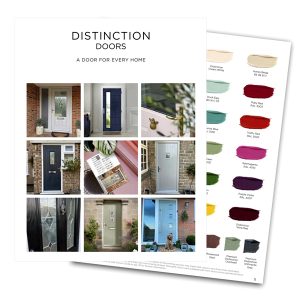Why Is the Bottom of My Door Rotting?
Rotting at the bottom of a door can cause significant damage and reduce the functionality of your entryway. The issue often stems from excessive moisture, poor maintenance, or environmental exposure. Instead of patching up the problem repeatedly, consider replacing your old wooden door with a durable composite or uPVC option for a long-term solution.
Moisture: The Primary Cause of Rotting Doors
Rainwater and Splash-back
Rainwater and puddles near the door can seep into wooden doors, particularly at the base. Over time, this moisture leads to rot, weakening the structure.
Condensation and Humidity
Changes in temperature cause condensation, which can saturate wooden doors. Constant exposure to damp conditions makes rot inevitable.
Lack of Weather Sealing
Old or poorly installed doors often lack effective weatherproofing. Water can easily penetrate the base, accelerating the rotting process.
Why Replace Instead of Repair?
Repairing a rotting door offers only a temporary fix. If moisture damage has already compromised the integrity of the wood, further deterioration is unavoidable. Replacing your door with a composite or uPVC alternative provides a permanent solution that eliminates the risks associated with rotting.
Benefits of Composite Doors
Exceptional Durability
Composite doors combine materials like wood, uPVC, and insulating foam to resist moisture and withstand harsh weather conditions. The multi-layer construction prevents water from seeping in, eliminating the risk of rot.
Low Maintenance
Unlike traditional wooden doors, composite options don’t require frequent repainting or sealing. A simple wipe-down keeps them looking clean and new.
Enhanced Security
Composite doors feature strong cores and advanced locking systems, offering better security than traditional wooden doors.
Wide Range of Designs
Choose from a variety of styles, colours, and finishes to suit your home’s aesthetic. Composite doors can mimic the appearance of wood while providing superior performance.
Advantages of uPVC Doors
Water Resistance
uPVC doors naturally repel water, making them an excellent choice for homes in areas with heavy rainfall. They don’t swell, warp, or rot over time.
Cost-Effective Option
uPVC doors offer a budget-friendly alternative to composite doors while still providing excellent durability and low maintenance requirements.
Energy Efficiency
Modern uPVC doors include insulated cores and double-glazed glass options, helping to reduce energy costs by keeping your home warmer in winter and cooler in summer.
Customisable Designs
With various colours, finishes, and decorative options available, uPVC doors allow you to match your home’s exterior perfectly.
Why Choose Replacement Over Repairs?
Save Time and Money
Frequent repairs to a rotting wooden door can add up quickly. Investing in a replacement eliminates ongoing maintenance costs and provides a long-term solution.
Improve Energy Efficiency
Replacing a damaged door with a composite or uPVC option enhances insulation, reducing drafts and improving energy savings.
Boost Curb Appeal
A new door instantly upgrades the appearance of your home, adding a modern and polished look that lasts for years.
Ensure Long-Term Durability
Unlike wooden doors prone to rot, composite and uPVC doors offer lasting protection against moisture, weather, and wear.
Conclusion
If the bottom of your door is rotting, repairs only offer a temporary fix. Replacing your old wooden door with a composite or uPVC alternative provides a durable, cost-effective, and low-maintenance solution. With superior resistance to moisture, better energy efficiency, and modern designs, these doors enhance your home’s appearance and functionality while saving you time and money in the long run. Invest in a replacement today for a lasting solution to rotting doors.

